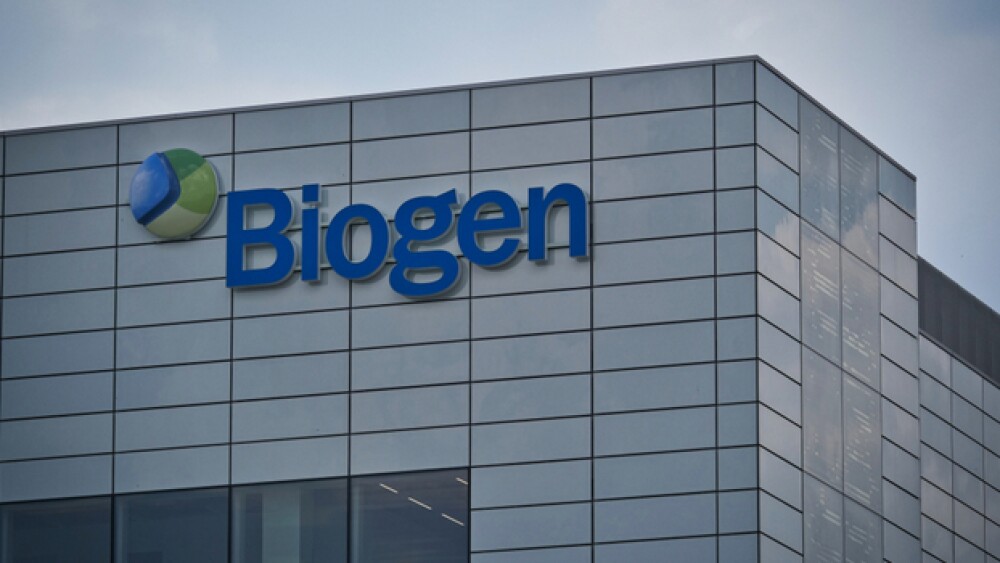Adulhelm’s proposed price tag of $56,000 per patient per year is hardly the most expensive drug on the market, but controversy regarding packaging and pricing continues.
PictureDesignSwiss/Shutterstock
Biogen’s Aduhelm (aducanumab) for Alzheimer’s disease has been controversial at least since November 2020, when the U.S. Food and Drug Administration (FDA)'s Peripheral and Central Nervous System Drugs Advisory Committee voted against recommending it.
Although the controversy goes back to at least March 2019, when an Independent Data Monitoring Committee conducted a futility analysis, it decided the drug was unlikely to meet the clinical trials’ endpoints. Biogen and its development partner Eisai agreed to pull the plug on the program, only to revive it several months later.
The drug was approved under an accelerated approval pathway on June 7, despite never discussing the possibility of that pathway with the advisory committee. Since then, three of the advisory committee members resigned in protest, the House Committee on Oversight and Reform announced plans to investigate the approval and pricing of Aduhelm, and Janet Woodcock, the acting commissioner of the FDA, asked the independent Office of the Inspector General to investigate how the FDA and representatives of Biogen interacted before the approval.
Although much of the controversy revolves around whether the companies’ clinical trials demonstrated actual clinical benefits for the drug, another major controversy has been the proposed price tag of $56,000 per patient per year. That’s hardly the most expensive drug on the market, but the number of Alzheimer’s patients in the U.S. exceeds 3 million. Although Biogen and the FDA have since limited the label to early-stage disease, that’s still an extremely high annual expense, particularly since most patients in the U.S. are likely to be on Medicare.
A new study has also suggested that the price tag would likely be closer to $61,000 to $62,000 per patient based on dosage needs, according to an analysis published July 9 by Health Affairs. Much of the Health Affairs analysis revolves around something that drug companies sometimes do—package drugs in vials that contain more than is needed—and how payer policy mandated by the U.S. government and National Academy of Medicine have been wrangling over this for several years.
The author of the study is Peter B. Bach, director of the Drug Pricing Lab at Memorial Sloan Kettering Cancer Center and chief medical officer of Delfi Diagnostics.
For example, Takeda’s Velcade, a drug for multiple myeloma, is only available in the U.S. in 3.5 mg vials, even though it is sold in 1 mg vials in Europe. The typical patient dose is about 2.5 mg. In a 2016 analysis conducted by Bach and colleagues, this procedure across the industry (not just Velcade) resulted in $2 billion in excess spending across the U.S. health care system. In the case of Velcade, the discarded amount generated $425 in revenue for Takeda per milligram, even though it went unused.
The U.S. government in 2017 required providers to attach a JW modifier to the reimbursement line item for discarded drugs, and it was eventually included in the Prescription Drug Pricing Reduction Act. The Congressional Budget Office estimated $9 billion in 10-year savings from the provision.
But a committee of the National Academy of Medicine has concluded that Congress should allow pharma companies to keep the money they gain by packing their drugs this way, and the Centers for Medicare and Medicaid Services (CMS) should drop the JW reporting requirement. The Academy cites an economic theory called “willingness to pay,” which is how much a consumer pays for a product is a benchmark for how much the consumer values it.
Regarding Biogen’s Aduhelm, the company has started an annual average price of $56,000 based on an average patient weighing 75 kg (about 165 pounds). Health Affairs notes that this is the most efficient dose at 10 mg/kg with two 300 mg vials and one 170 mg vial. There would be very little left over. Heavier patients require more, and lighter patients require less.
Health Affairs points out that the average price is much more likely to be $61,000 to $62,000, which “might seem like a small error until you consider that even at the low end of projected sales of Aduhelm (500,000 patients per year) and the more conservative estimate of the excess cost due to the drug’s packaging, it translates into $2 billion more in annual revenue to the company.”
Biogen has claimed that the average weight of a patient in the U.S. with mild Alzheimer’s symptoms is 74 kilograms. Bach conducted an analysis and found the price would be $61,880 for a patient weighing 180 pounds and $68,430 for a patient weighing 200 pounds. And physicians would likely end up discarding excess drugs left in the vials, although payers will pay for the entire vial.
Biogen disagreed with Bach’s analysis, saying it didn’t specifically analyze the body weights of Alzheimer’s patients. Biogen stated, “Biogen works with physicians to ensure efficient use of vials to minimize wastage.”
Aduhelm will be packaged in two sizes, 300 mg and 170 mg vials. Bach estimates approximately 30 mg of the drug will be in excess and probably discarded after each monthly dose for each 163-pound patient. That would add up over a year to an additional $2,184 annual to be paid by insurance companies and Medicare.
Bach says this exploits a flaw in the payment system for infused and injected drugs. “It’s unfair play that leads to a huge boost in profits, Bach told The Wall Street Journal. “They’re taking advantage of the fact that the claims and billing system is such a morass and they are able to sneak in extra revenue that they are not open about.”
Part of Bach’s thesis in the analysis is that this kind of misleading pricing is prevalent in the industry. Judy Truong and colleagues published a 2017 study in the journal Cancer that drug companies included the cost of discarded drug in only half of the studies they published; another study by Ziyan Chen and colleagues published in Expert Review of Pharmacoeconomics & Outcomes Research in 2021 found only 13 of 43 model-based assessments of immunotherapies used the cost of discarded drugs in their price evaluations.
“It might seem I am being nit-picky until you consider that companies publish cost-effectiveness analyses with the intent of convincing payers that the benefits of their treatments justify their prices,” Bach wrote.





